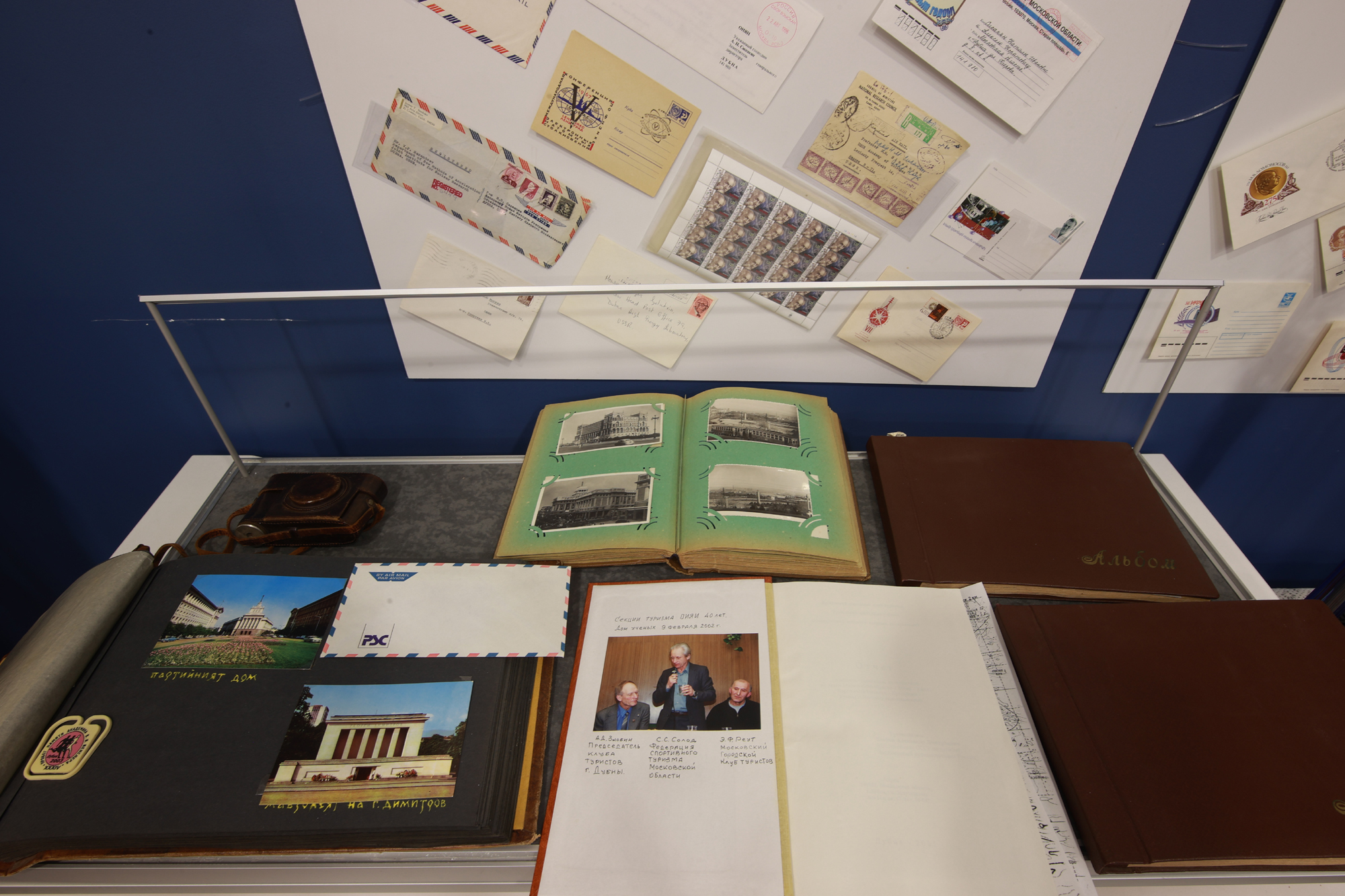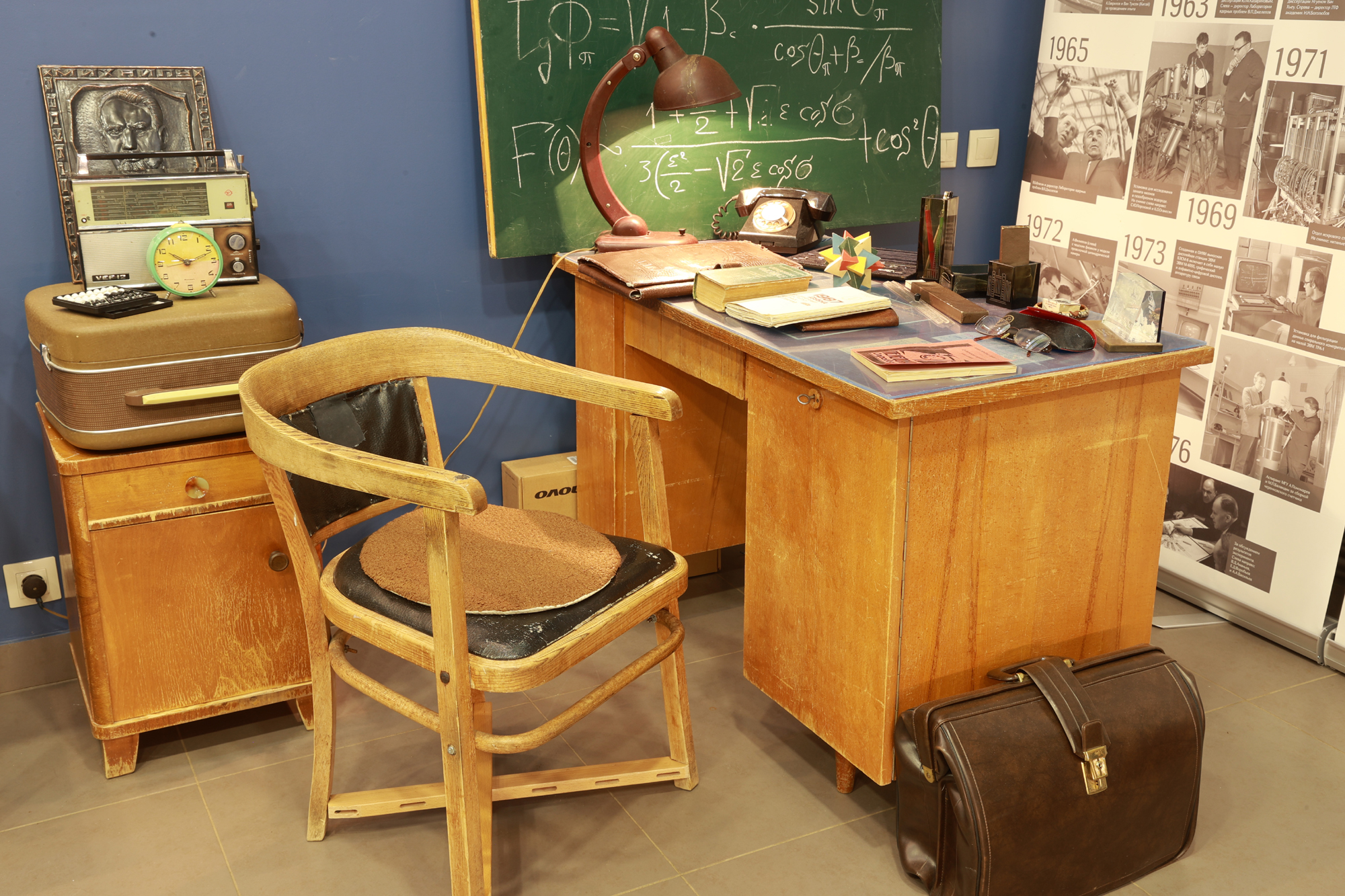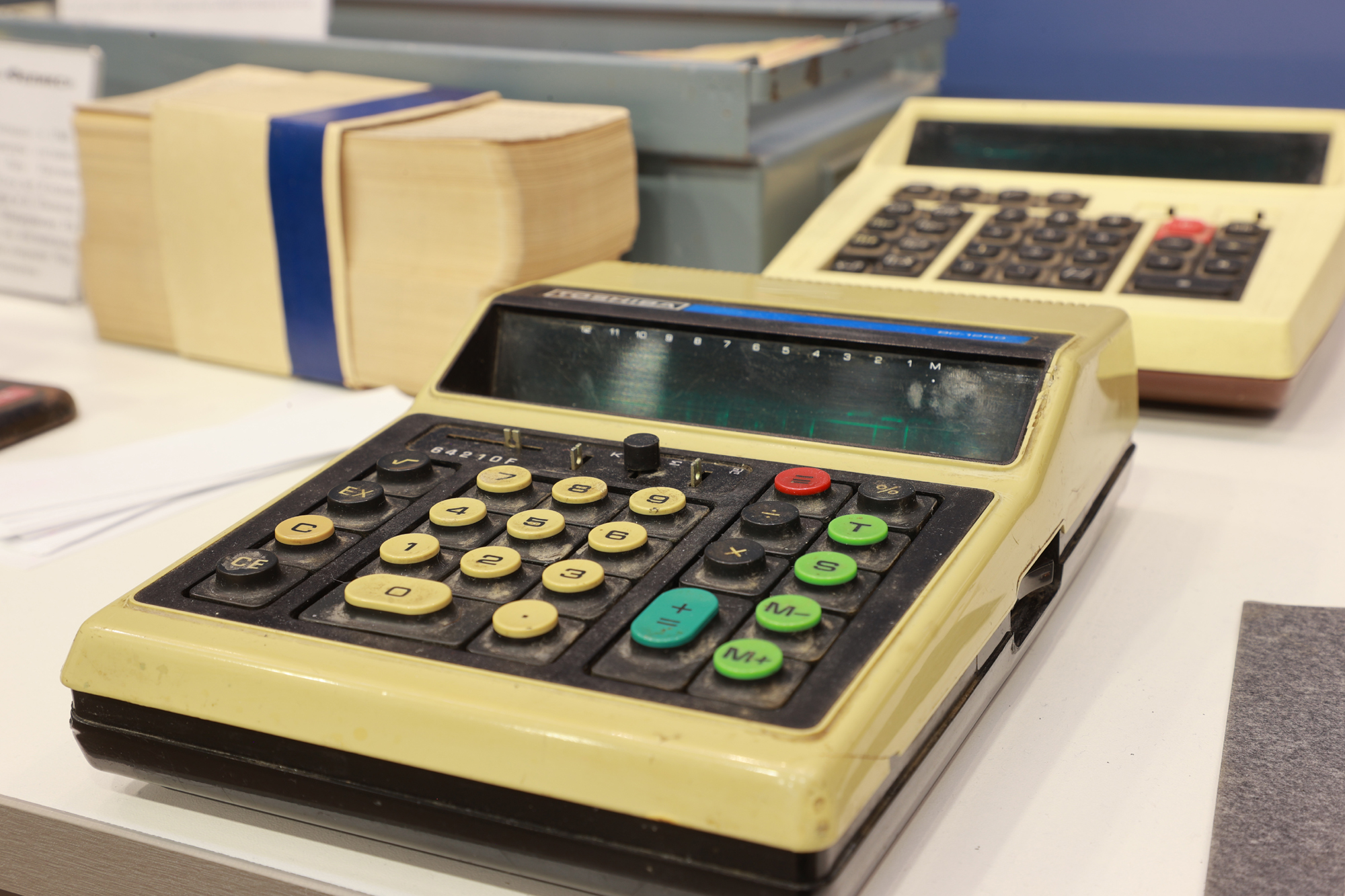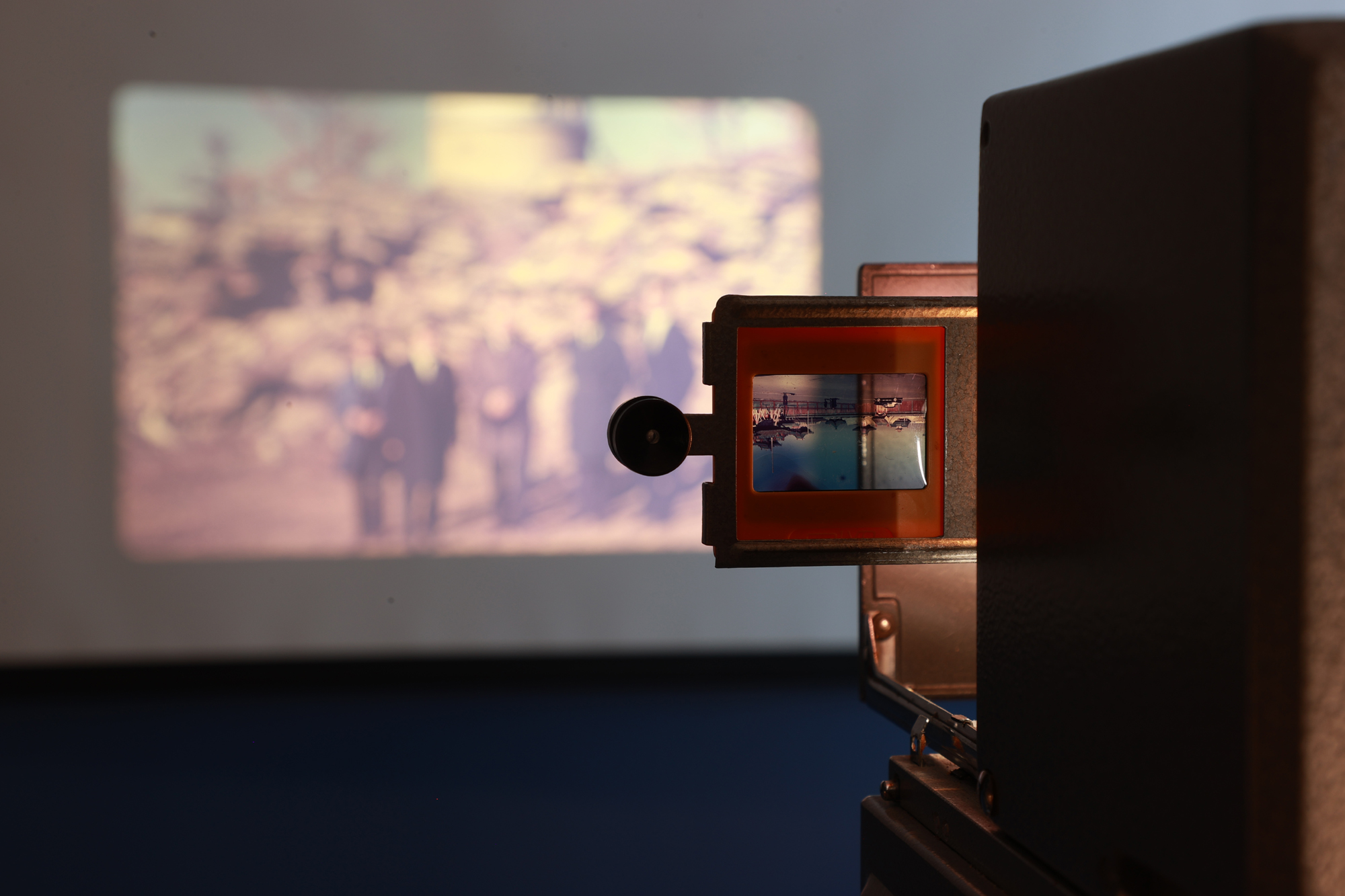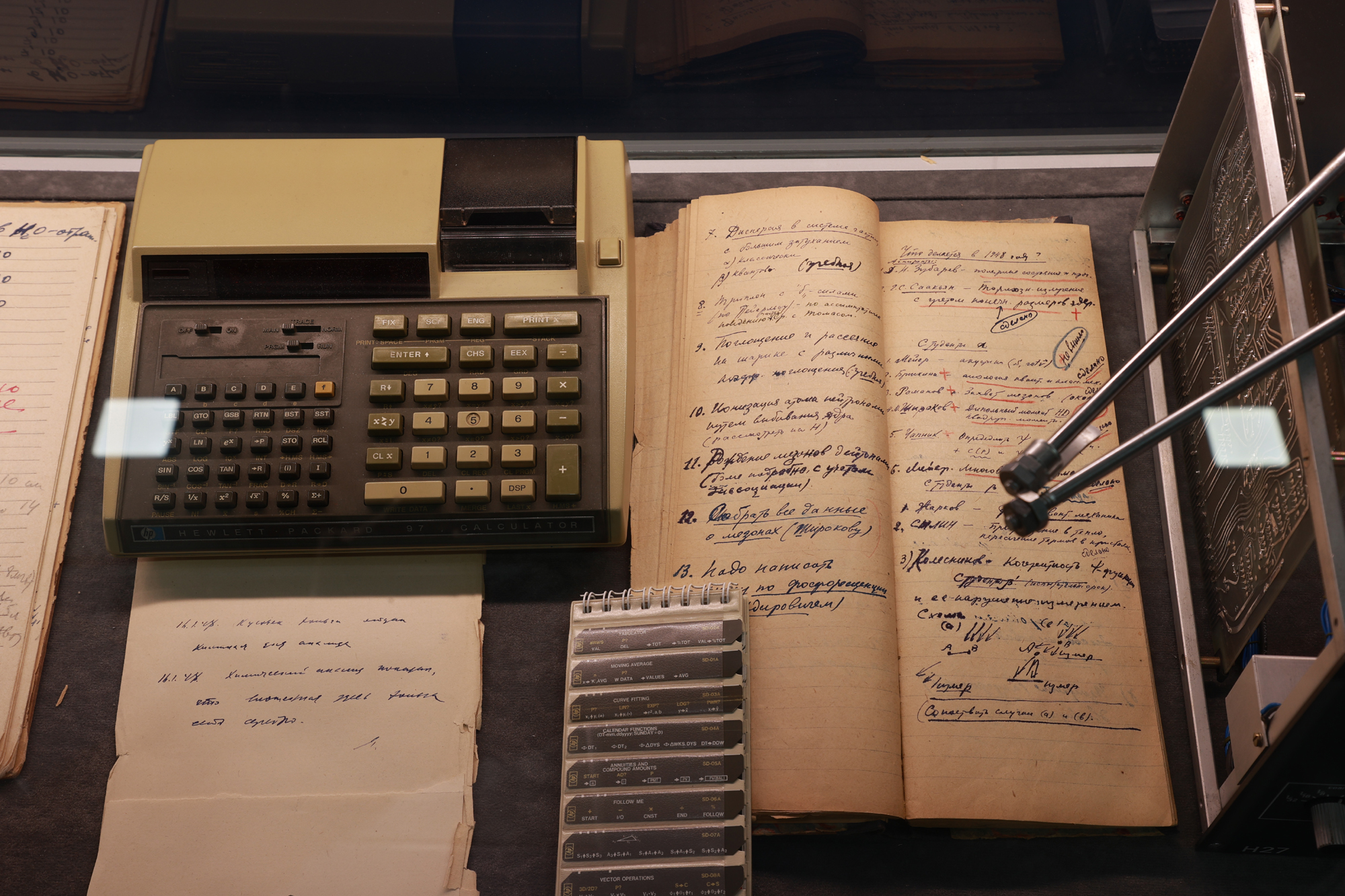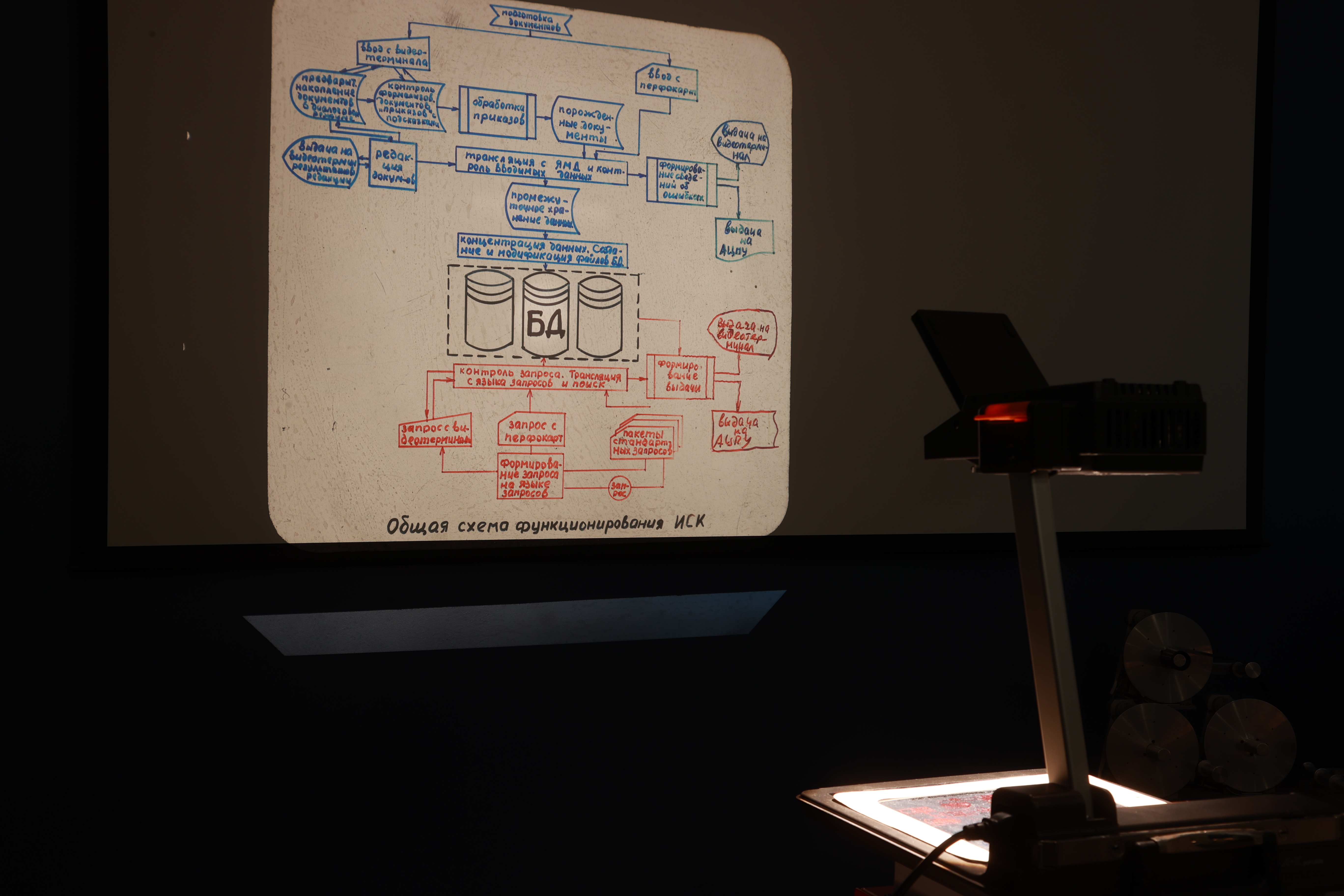Exhibition ‘Workdays of a researcher in XX century’ opened
Culture, 24 May 2021
A new exhibition has opened in the Museum of History of Science and Technology of JINR in honour of the 65th JINR anniversary. It is a joint project of the Museum and the Laboratory of Nuclear Problems JINR. The core of the exhibition is items from collections of the Museum and personal collections of employees, documents from memorial offices of B. M. Pontecorvo and M. G. Meshcheryakov, photos from the JINR archive.
The main sections of the exhibition are workspace of a JINR employee, office and computer equipment, ‘handmade’ drawings, experimental science, documents of researchers, conferences and seminars, leisure time of researchers, ‘JINR Horizons in Philately’… and even ‘Time forward – Time back!’ So, the organizers managed to present the everyday life of JINR in all its diversity.
The opening of the event gathered 10 veterans from 5 JINR laboratories. Their total work experience is more than 500 years. Half a thousand years of creative search!.. It was a pleasure for veterans to recall and interesting for young guests to learn about the workdays of JINR, what scientific tool employees used, how they stored information and communicated with colleagues, participated in social life, and rested in their free time. It might be hard to believe for those born in the XXI century that glorious discoveries of the past year and the first basic facilities of the Institute were made and installed without powerful computers, software-controlled machines, consultations via mobile phones.
As of today, more than a hundred people have already visited the jubilee exhibition. So, it is possible to say that the event has already received feedback.
‘Marvelous exhibition that reflects technical, historic, cultural and everyday aspects of nuclear science in our country,’ tourists from Arzamas-16 have written in the guest book.
‘I convey special gratitude for the creation of a workplace of an employee. It seemed like I found myself in my youth,” a tourist from Zelenograd has written.
Many items presented here are unique, for example, silver foil used by M. G. Meshcheryakov at Radium Institute in Leningrad, an arithmometer of the Phenix series that also belonged to Meshcheryakov. A calculator and notebook of the Hewlett-Packard company that belonged to the desk officer of G. N. Flerov. A sample of the Dubna “folk art craft” – reverse carving on thick-layer plexiglass of 1994: it was a gift from the LHE team to A. N. Sissakian. And here are two albums of drawings by B. S. Neganov extracted in 2018 from under the snow! There are also the manuscripts of M. G. Meshcheryakov and B. Pontecorvo, including the manuscripts made on the transperencies and intended for display on the overhead. There is a large-format JINR departmental envelope with the name of the Institute in the languages of all the Member States of the late 1950s and early 1960s (including Albanian and Chinese). Anniversary envelopes dedicated to JINR with the cancellation of the first day. Next — laboratory logs. The new employee of the Hydroengineering Laboratory Bruno Pontecorvo filled them in a bizarre mixture of English and Italian (then, of course, Russian was added to them)… In the laboratory journal of S. M. Korenchenko, Bruno Pontecorvo appears as an anonymous ‘professor ______’. The laboratory journal of E. P. Shabalin reflects the moment when the pulsed reactor IBR-1 started operating. There is also a neutron tape measure made in Obninsk in a single copy on the instructions of D. I. Blokhintsev. Representing a mechanical random number generator, it was used in the design of the IBR-1 reactor. The exhibition has a section of the French DIDAC spectrometer. Tsvetan Vylov, a JINR Vice-Director, compiled an atlas of radiation spectra of radioactive nuclides. And many, many other items.
The exhibition is open until 12 August 2021 on workdays from 3:00 to 6:00 PM. All epidemiological requirements and rules should be observed during the visit. Please, call +7 (496) 216-58-31 to book the visit.
Photos by Igor Lapenko


